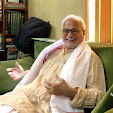G.N. Devy is a literary critic and cultural activist
Thursday, August 12, 2021
Reinterpreting tradition, questioning every established authority
Three other silent beginnings deserve mention for the scale of their combined impact, all three invoking the ancient idea of the ashram as a space for transformation. The protagonists of these three initiatives, reminiscent of some Vedic rishis, came to be recognized by the world as Gurudev, Mahatma and Maharishi. The period of 1920-21 marks moments of great transformation for all three. Of the three — Rabindranath Tagore (1861-1941), M.K. Gandhi (1869-1947) and Aurobindo Ghosh (1872-1950) — the last was the youngest. Born on August 15, 75 years before 1947, he had played a leading role in the fight against British rule during the years after the Bengal Partition, had been charged with sedition and was jailed for a year before he turned his energy towards re-casting various schools of Indian philosophy as a vast challenge to the doctrinaire and orthodox view of god. After moving to Pondicherry, he wrote, with matchless energy, essays reinterpreting tradition, questioning every established authority on the subject and produced an amazing corpus of philosophical work. The essays were first published in his journal, Arya, and later brought together as books— The Life Divine, The Synthesis of Yoga, Essays on the Gita, The Secrets of the Veda, Hymns to the Mystic Fire, The Renaissance of India, The Human Cycle and Future Poetry. It was simply breathtaking, as philosophical work goes. In 1920, Sri Aurobindo chose to cease publication of Arya, and all but stopped writing in order to concentrate on his profoundly meditative epic, Savitri. He dedicated the next three decades of his life to bringing on the earth a higher consciousness through his yogic work for the transformation of the human race. Central to the task was a collective life, the ashram at Pondicherry.
Subscribe to:
Post Comments (Atom)

No comments:
Post a Comment